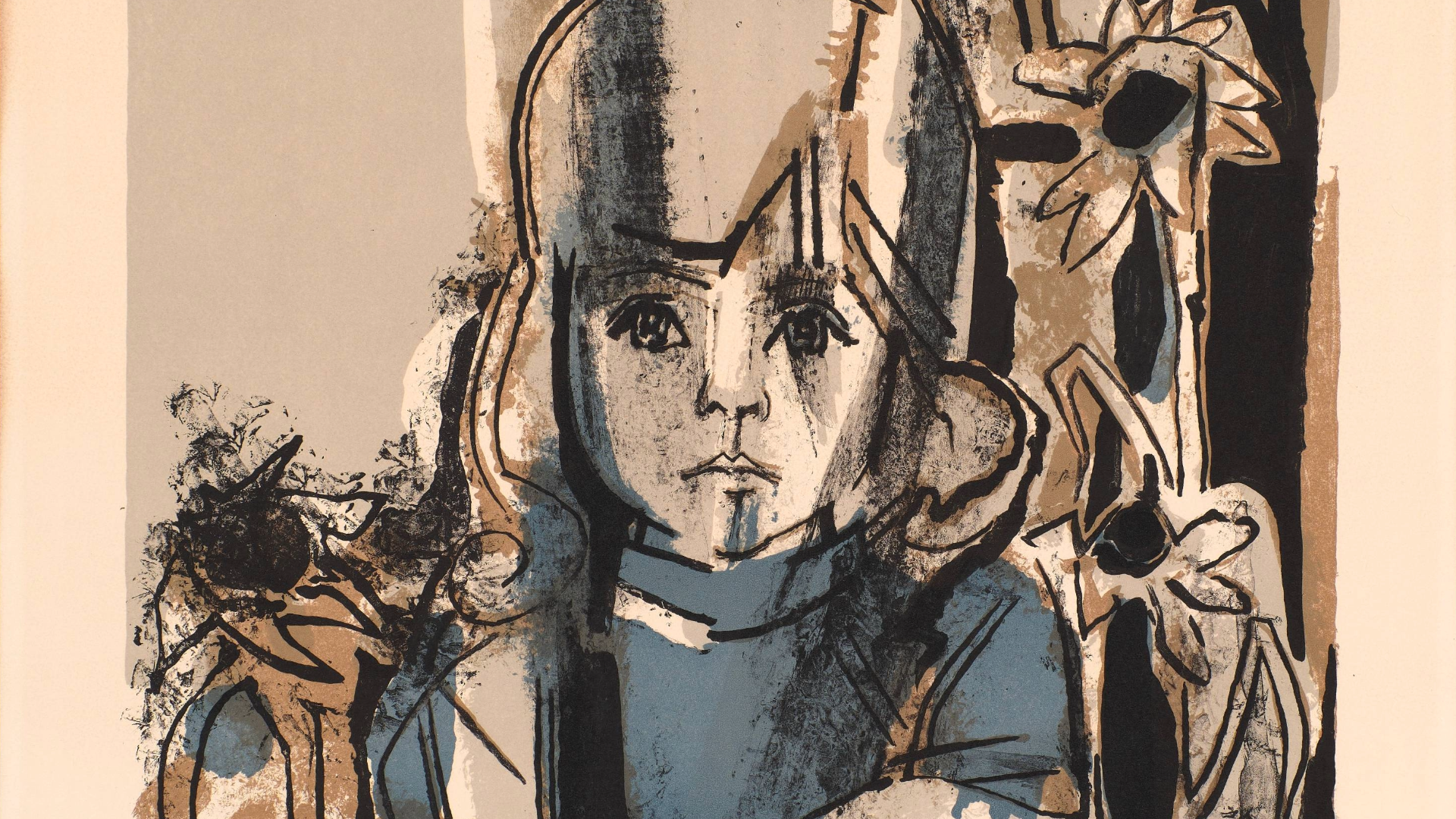Starting Anew
After leaving Picasso, Gilot found solace and stability with actor Luc Simon. She liked that he brought out her poetic and lyrical side, and they married in 1955. The following year, Gilot gave birth to her third child, Aurelia.
Holding her own
When Gilot left Picasso, he proclaimed that no one would ever take her art seriously again. He said her career would plummet and her only relevance in the art world would be the proximity she had had to him. And Picasso had the influence to make this prediction come true; by the end of 1956, he’d successfully convinced Kahnweiler to terminate Gilot’s contract. She was also blocked from exhibiting at the Salon de Mai.
But Gilot refused to fade into obscurity. In late 1957, she signed a new contract, this time with Galerie Coard. She received a personal invitation from Fernand Mourlot in 1959 to return to the printmaking studio she used to visit with Picasso, Mourlot Atelier. There, she delved into lithographs, creating portraits of her youngest child Aurelia.
In 1961, Gilot was introduced to the American market. She’d learned that a number of her collectors were American, and she liked that the United States evaluated her by her work rather than her history.



